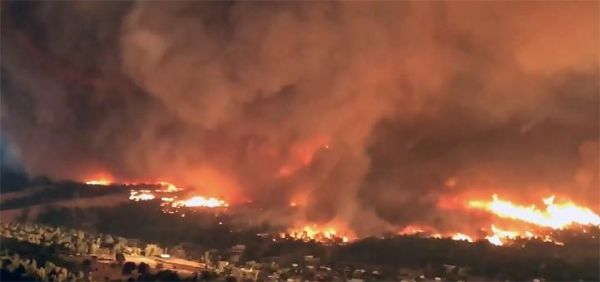A destructive fire-generated vortex – a massive stream of rising, spinning, smoke, ash and fire – that topped out at 17,000 feet above the earth, accelerated the Carr Fire that killed eight people and devastated a widespread area in the Redding, California region in July 2018. The vortex, a little-observed atmospheric phenomena, was spinning with the power of a class three tornado, which earned it the name of Firenado.
Atmospheric scientist in the Department of Physics Neil Lareau has authored a paper in the scientific journal Geophysical Research Letters documenting the rare firenado, finding a number of factors that combined at just the right time and place to catalyze the deadly fire. These observations may help forecasters and scientists identify – and potentially warn – for future destructive fire-generated vortices.
“This paints a clear picture of the sequence of events leading to the vortex development and intensification,” Lareau said. “This sequence suggests the Carr Fire vortex may qualify as pyro-genetic tornado, and not merely a tornado-strength fire-generated vortex.”
In his study, satellite and radar observations document the evolution of the vortex revealing similarities to tornado dynamics. A key factor in the vortex formation was the development of a fire-generated ice-topped cloud (known as a pyro-cumulonimbus) which reached as high as 39,000 ft. The development of the cloud helped stretch the underlying column of air, concentrating the rotation near the surface and causing the tornado strength winds, estimated at 143 mph, the strength of an EF-3 tornado.
Read more at University of Nevada, Reno
Image: Atmospheric sciences professor Neil Lareau, of the University of Nevada, Reno, documented this atmospheric phenomenon, a firenado, at the Carr Fire that devasted the region surrounding Redding, California in July. (Credit: Photo courtesy of CalFire)


